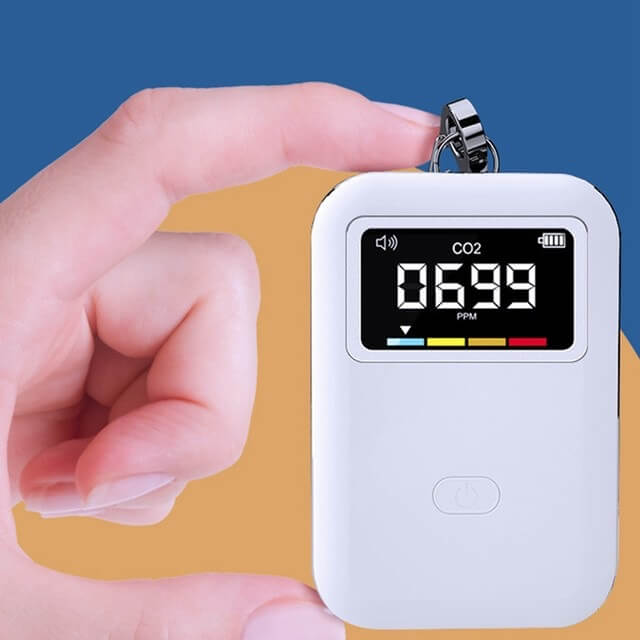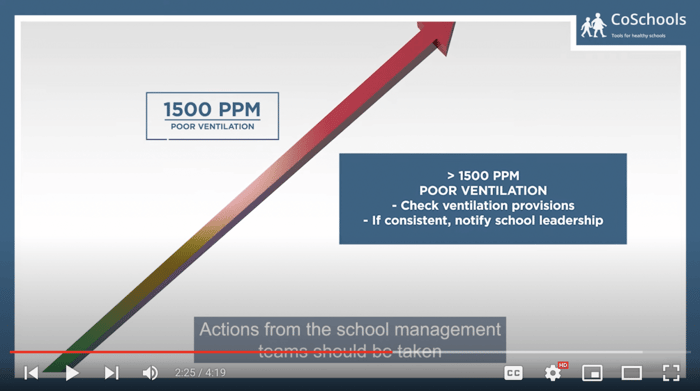
Why are we monitoring carbon dioxide?
Why are we monitoring carbon dioxide?
This great video explains the benefits of monitoring carbon dioxide for reducing the transmission of airborne infections and improving concentration in work environments and schools:
If you'd like to check out our mini-CO2 monitors click on the image below:
Why is fresh air good for you?
Affects from a lack of fresh air, are caused by a lack of oxygen to the brain causing fatigue and drowsiness.
Benefits of healthy air
makes you happier.strengthens your immune systems good for your digestive systemeduces airborne illnesses and infectionsincreases your energy and sharpens your mindhelps you sleep better at night
How can we assess the freshness of indoor air?
One simple and effective tool for measuring indoor air quality is to assess the carbon dioxide (CO2 levels).
Outdoor air has a CO2 level of roughly 400 to 450parts per million (ppm).
Animals breath out CO2. Generally the more people in a relatively enclosed air space tge higher the CO2 level.
most jurisdictions accept up to a maximum of 800ppm for ‘safe’ indoor air.
At levels of 1500ppm our ability to concentrate decreases by 50%.
What can we do when we’re in an indoor environment with high CO2 levels?
articulates or airborne pathogens (eg viruses) are a concern then wear a respirator (eg well fitted N95 mask)
For more information on the benefits of fresh air please read this link:
Why is fresh air good for you?
Affects from a lack of fresh air, are caused by a lack of oxygen to the brain causing fatigue and drowsiness.
Benefits of healthy air
makes you happier.strengthens your immune systems good for your digestive systemeduces airborne illnesses and infectionsincreases your energy and sharpens your mindhelps you sleep better at night
How can we assess the freshness of indoor air?
One simple and effective tool for measuring indoor air quality is to assess the carbon dioxide (CO2 levels).
Outdoor air has a CO2 level of roughly 400 to 450parts per million (ppm).
Animals breath out CO2. Generally the more people in a relatively enclosed air space tge higher the CO2 level.
most jurisdictions accept up to a maximum of 800ppm for ‘safe’ indoor air.
At levels of 1500ppm our ability to concentrate decreases by 50%.
What can we do when we’re in an indoor environment with high CO2 levels?
particulates or airborne pathogens (eg viruses) are a concern then wear a respirator (eg well fitted N95 mask)
For more information on the benefits of fresh air please read this link:





